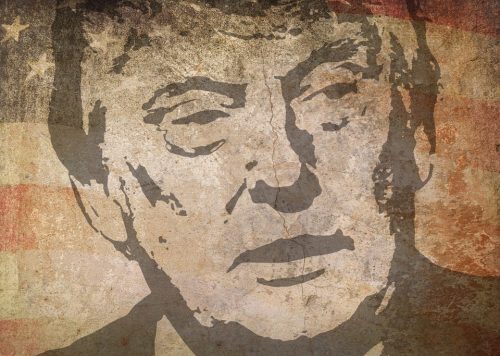Editor’s Note: This article originally appeared in The Conversation Canada and was picked up by the National Post.
 NAFTA has come under a series of threats since Donald Trump became the 45th president of the United States.
NAFTA has come under a series of threats since Donald Trump became the 45th president of the United States.
According to his tweets and public comments, the president believes strongly that NAFTA is a disastrous trade deal for the U.S.
But Trump has different issues with NAFTA when it comes to Canada and Mexico. And there are ways for both countries to fight back, regardless of NAFTA’s ultimate fate.
Canada
In Canada, most businesses are worried about any potential collapse of NAFTA.
The slow progress in the NAFTA talks has created grave uncertainty and this could have a detrimental effect on decision-making. It seems Canada is more concerned about the stability of NAFTA than the U.S.
This isn’t surprising because the Americans have diversified their exports much more than Canada has — the U.S. accounts for more than 75 per cent of Canadian exports.
However, the exit clause under NAFTA requires six month’s notice before any member country can withdraw. That should be enough time for any business to devise alternative strategies or find new places to sell their goods as well as new importers, and to therefore minimize any potential economic damage from the eventual collapse of NAFTA.
With or without NAFTA, Canada can still remain competitive in the North American market, especially as Canada remains a natural trading partner for the United States.
Canadians share a common border, a common language, similar cultural and social values and almost identical consumer tastes and preferences with Americans. That should help reduce the costs of doing trade between the U.S. and Canada even in the absence of a trade agreement.
Without NAFTA, Canada may have to resort to most-favoured nation (MFN) tariffs, which is what the U.S. has imposed on WTO member countries. Facing MFN tariffs of about 3.5 per cent on average will not significantly lower the competitiveness of Canadian exporters in the U.S.
There are many other possible remedies Canada can embark upon as a country to minimize uncertainty about NAFTA. One main tool will be diversifying its export market to significantly reduce Canada’s dependence on just a few export markets or destinations.
Already, the government is diversifying by signing two major trade agreements: The Comprehensive Economic and Trade Agreement (CETA) with the European Union and the Trans-Pacific Partnership (TPP) with Pacific Rim countries.
Incidentally, Canada’s embrace of TPP may have contributed to a change in Trump’s rhetoric about TPP being a bad deal. It doesn’t seem a mere coincidence that just as Canada signed the pact, the U.S. president was in Davos suggesting the U.S. was ready to negotiate bilaterally or regionally with any TPP countries.
The Canadian government must also focus on how to improve the economic environment to make firms and businesses operating in Canada competitive.
There are lots of WTO-consistent ways and means that Canada can do this, especially by supporting research and development that promote innovations and competitiveness for Canadian businesses, and backing technological innovations and making them accessible to many businesses at minimal costs.
Technological advancement is more beneficial when there is direct collaboration between universities and businesses, and so businesses should be encouraged to fund and support research.
That type of direct collaboration may lead to development of technologies that will be tailored to Canadian businesses and make them more competitive in the world market.
Governments must therefore incentivize businesses that fund research by giving them tax rebates.
New and innovative technologies can also be driven by skilled workers.

Canada can take real advantage right now of the Trump administration’s anti-immigration policies and attract more skilled labour from the rest of the world.
Skilled immigrants have contributed enormously to many nations, including the U.S., so the Canadian government must intensify its efforts to attract new skilled workers by reducing the standards, time and costs for skilled immigrants who want to come to Canada.
Time to revisit ‘supply-management’
Revisiting supply-management policy may also have direct implication for agricultural sector competitiveness in Canada. The policy, which dates back to the 1970s, involves Canada using fixed prices, production quotas and so-called tariff-rate quotas to protect its dairy, egg and poultry sectors.
The U.S. is demanding the phasing-out of supply management over a period of 10 years. And, in fact, supply management may not be helping Canadian farmers to be competitive.
There exists a huge domestic market in the agri-food sector, and supply management is considered by some to be a major constraint. Looking, for example, at the dairy sector in the figure below, Canada has consistently experienced increasing trade deficits.
With increasing trade deficits, this means that Canada is still import-dependent; it imports more than it exports. Increasing imports indicate that there is a huge domestic market for dairy.
Farmers could have easily improved their domestic competitiveness through economies of scale. The increasing dairy imports also suggest that even after paying out tariff-rate quotas, foreign farmers are still competitive in the Canadian market.
Phasing out supply management, therefore, may improve the competitiveness of Canadian farmers and give Canadian consumers competitive prices for dairy/poultry products.
Many experts are asking why the government is willing to continuously sacrifice the gain of millions of Canadian consumers for the gain of a few farmers.
What’s more, there are contingency measures within the WTO that Canada can use to protect certain sectors if import surges threaten or pose serious risks to the Canadian economy.
Mexico
Trump’s problem with Mexico seems to stem from the fact that he finds it unthinkable that the U.S. should have a trade deficit with the Mexicans at all. He also takes issue with migrants crossing the border to illegally reside in the U.S.
That has resulted in his infamous protectionist proposals of imposing tariff barriers in the form of a border adjustment tax of about 20 per cent on Mexican imports, and his plan to build a wall on the U.S.-Mexico border.

Given the U.S. and Mexico are members of both the World Trade Organization and NAFTA, the implementation of Trump’s Mexican border tariff will contravene WTO principles that stipulate non-discrimination between WTO member countries. Practically speaking, it won’t be feasible for the U.S. to apply the tariff.
Nonetheless, the U.S. can also take advantage of WTO contingency measures, and employ a measure that guards against surges in Mexican exports. But the Americans would have to apply it in a non-discriminatory manner to all their trading partners.
In addition, the U.S. would have to demonstrate a causal link between the increase in imports and serious harm to domestic industry in order to justify the application of the safeguards. The Americans would also be expected to offer compensation to exporters of all countries that would be affected by any use of such safeguards.
However, the proposed border tariff of 20 per cent is far above that. And so if the U.S. insists upon imposing the border tax on Mexico, it will result in Mexico filing a complaint with the dispute settlement body of the WTO.The United States has the flexibility to increase its tariffs on a non-discriminatory basis, provided the new tariffs are not above the so-called “bound rate” of approximately 3.5 per cent (the individual commitment made by all WTO members not to raise the tariff above a specified level).
If it is determined that the U.S. is off side, Mexico can then ask for permission to retaliate.
Obviously, with a higher tariff, U.S. companies (especially those producing import substitutes or similar goods to Mexico) could especially benefit in terms of higher market share and higher prices for those goods. However, this could also potentially boost the costs of production for U.S. companies that use goods and raw materials from Mexico to make their products.
One argument in favour of the border tariff is that it would allow the U.S. government to raise revenues to fund projects, especially the border wall.
Ultimately, though, American consumers would also suffer a loss: They’d be forced to pay higher prices for goods imported or produced domestically with Mexican content.
![]() Apart from these costs and gains, there would be additional costs to U.S. exporters if WTO-sanctioned trade retaliations are applied following complaints from Mexico.
Apart from these costs and gains, there would be additional costs to U.S. exporters if WTO-sanctioned trade retaliations are applied following complaints from Mexico.
Sylvanus Kwaku Afesorgbor, Assistant Professor, Agri-Food Trade and Policy, University of Guelph
This article was originally published on The Conversation. Read the original article.